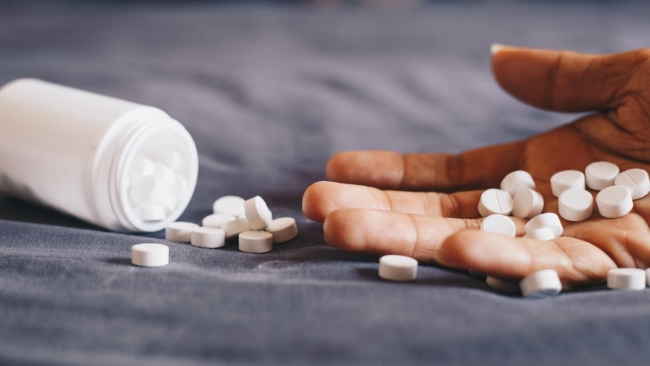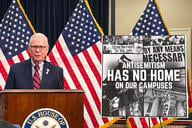You have /5 articles left.
Sign up for a free account or log in.

Istockphoto.com/Anut21ng
The University of Southern California is investigating whether a spate of student deaths over the last month is related to drug overdoses. Although toxicology reports are still pending, university administrators are warning students about the dangers of opioids and recreational narcotics that could unknowingly be mixed with opioids.
“These losses have shaken our community and our sympathy goes out to the families and friends who are mourning loved ones,” Winston Crisp, the vice president of student affairs, along with the chiefs of public safety and health services, wrote in a letter to students. “We need you to be aware of the dangers posed by drug use. In particular, we want you to be informed about the dangers of abusing opioids.”
University officials sent the letter in an email to students on Tuesday evening, one day after a student was found dead in an off-campus apartment on Nov. 11. Two other students were found dead on Nov. 8 and 9, and two others died in October. A university spokesperson and the Los Angeles County medical examiner could not confirm the students’ causes of death.
The investigation of the deaths was first reported by the Los Angeles Times on Wednesday. The deaths have raised questions about whether USC and other colleges across the country should be implementing formal drug overdose prevention methods on campus, which until recently was not a major concern given the low overdose death rates among college-age people compared to other groups.
While college students are less likely to misuse opioids -- in prescription form or as illicit drugs like heroin -- there is increasing concern that pressed pills and white-powder narcotics sold illegally can be cross-contaminated with fentanyl, said Lucas Hill, the director and principal investigator for Operation Naloxone at the University of Texas at Austin. Opioids are the leading cause of overdose deaths in the United States, and fentanyl is 50 to 100 times more potent than morphine, according to the Centers for Disease Control and Prevention.
Operation Naloxone is an overdose prevention effort at UT that began in 2016 to promote the distribution of naloxone, a life-saving overdose-reversal drug, on the Austin campus and throughout Texas. The program began after three UT students died over the winter break that year with little explanation. A local harm-reduction group brought the deaths to the university’s attention as possible overdoses, Hill said. UT’s resident assistants are now trained to administer naloxone. The university also offers training for anyone interested, and the on-campus pharmacy has a standing order to provide naloxone to people without requiring a prescription, he said.
But overdose-prevention strategies like these are typically implemented as a reaction to a high-profile overdose death or series of deaths, Hill said.
“For a lot of these programs or approaches, the emphasis is the overdose death that occurs on their campus, in their dorm or in the family of a campus administrator,” Hill said. “The power of those anecdotes is clear. We’re hoping that the power of our anecdotes will help other campuses embrace this, but we’re hearing that campus administrators are saying, ‘We don’t really have that problem here.’ ‘That hasn’t happened to us.’”
USC officials' proactive steps so far do not indicate denial. Department of Public Safety officers carry and are trained to administer naloxone, a university spokesperson wrote in an email.
An association of USC pharmacy students distributes naloxone kits and provides overdose-prevention information to homeless people in downtown Los Angeles, near the university’s health sciences campus, but they have not done this work in University Park, where undergraduate students live, wrote Brooke Pigneri, a doctor of pharmacy student and president-elect of USC’s chapter of the College of Psychiatric and Neurologic Pharmacists. The naloxone kits require a prescription, and the group partners with a homeless health-care organization to legally distribute them, she wrote in an email.
Universities are eligible under California law to distribute naloxone, but individuals cannot obtain it without a prescription, according to the Network for Public Health Law.
Still, the stigma of illegal drug use and substance abuse disorders remains strong, and college administrators often worry that parents, prospective students and alumni who hear of an overdose-prevention program on campus may assume the campus has a “drug problem,” Hill said.
This fear was discussed at a White House meeting on the opioid crisis on college campuses. The Office of National Drug Control Policy invited college and university officials and harm-reduction advocates from across the country to discuss how campuses are combating the opioid epidemic, according to Jim Carroll, the agency's director. Surgeon General Jerome Adams and other federal officials also attended.
“No one is immune,” Carroll said. “We’re doing prevention in grade schools, and we’re also doing it for people living in communities who are above college age. There is a real need to sit down with colleges and universities, whether they’re community colleges or on U.S. News and World [Report]’s Best Colleges list, educating them on what the issues really are and making sure they’re addressing it, but providing a forum for schools leading the way to share strategy.”
He said there is "an appetite" on college campuses to better educate officials and students on overdose prevention.
"This is an example of why we need to reach all ages, all populations, and make sure we’re doing everything in our power to prevent the loss of life," Carroll said of the deaths at USC.
Carroll said the ONDCP and the Department of Education may consider updating Obama administration guidance issued in 2011 for institutional drug and alcohol policy to include information on opioid education and prevention.
Hill, who attended the meeting and spoke on a panel about naloxone accessibility on campuses, said campuses that stock naloxone at the ready for student and staff member use “remain extremely rare.”
Operation Naloxone was one of the first programs of its kind in the nation, and Hill has only heard from 20 institutions asking for advice on how to start their own programs. It’s hard to know how many of those campuses followed through with implementation, he said.
Providing naloxone is the easiest way for universities to start their prevention strategy, said Devin Jopp, CEO of the American College Health Association. In a 2018 survey of 170 institutions in ACHA’s Connected College Health Network, 64 percent of institutions surveyed reported their campus police carry naloxone, 39 percent had it available in student health services, 7 percent said it was provided in “other areas” and 12 percent reported it was not available at all, Jopp said.
“I don’t know that we’ve seen increases necessarily in college campus overdoses, but I can understand the concern around it, and we would share trying to get in front of it rather than around it,” Jopp said. “There’s also the other side of it -- universities can also be drivers of change in communities and provide opportunities for the communities that surround our campuses to help recover from addictions or more.”
David Arnold, assistant vice president for health, safety and well-being initiatives at NASPA: Student Affairs Administrators in Higher Education, said it’s important for leaders of institutional prevention efforts to understand how their geography impacts the prevalence of opioids on and around their campuses. Local data can be much more telling than national data, and college students, even if they're on a campus with little drug use, can still be affected by the level of drug use in the surrounding community.
“When we’re talking about opioids in particular and some of the CDC’s geography on this, there are certain areas that are more impacted,” Arnold said. “Southern California has been an emerging one, and the eastern Midwest is where we’re continuing to talk on these issues.”
USC’s warning notice students about possibly tainted street narcotics addressed its responsibility as a university to keep students safe, even though it’s still unclear what exactly caused the students’ deaths, Arnold said.
“It’s a huge tragedy,” Arnold said. “I think the way that USC is responding is showing dedication to student health and safety.”
At the University of Texas, Operation Naloxone has found that students or staff members at risk of overdosing, or bystanders who have naloxone on hand because the university gave it to them, are most likely to save lives, Hill said. Five overdoses have been reversed this way since 2016, he said.
“More schools should be doing it in some manner,” Hill said. “There might be a variety of ways to do that, depending on the size of the school and key stakeholders, but getting naloxone and getting it to students, staff and faculty is very important in some form. Schools that don’t do that, and those that have their doses of naloxone locked away in student health services, aren’t going to reap the benefits of that.”




